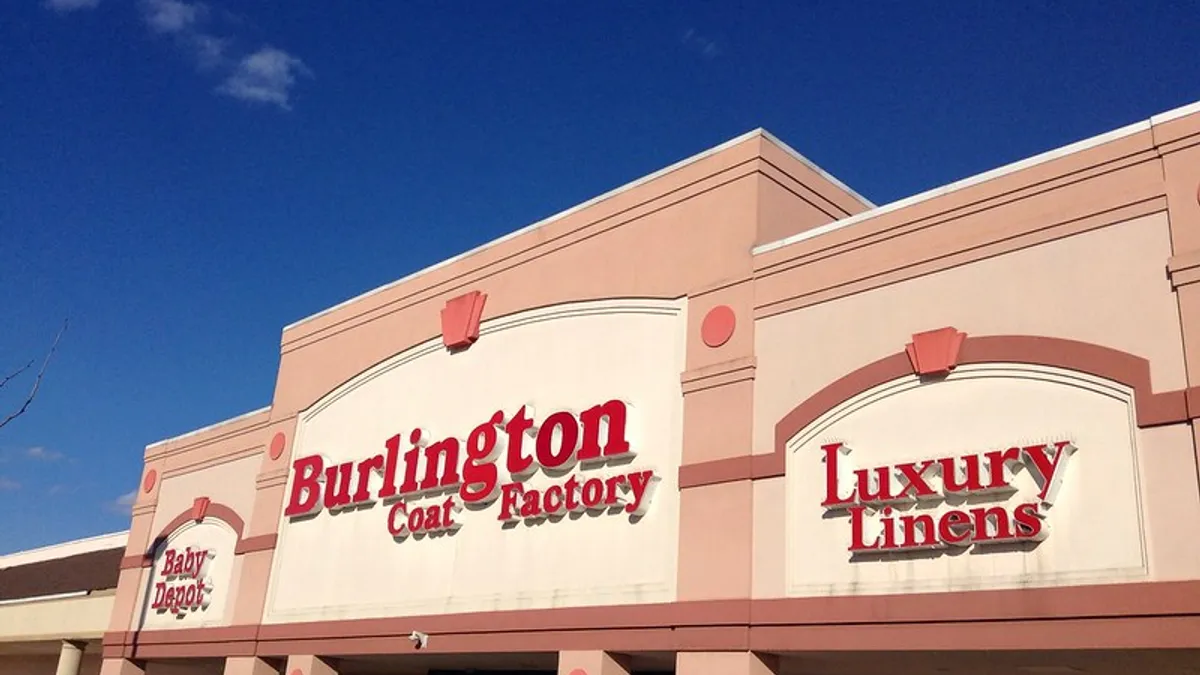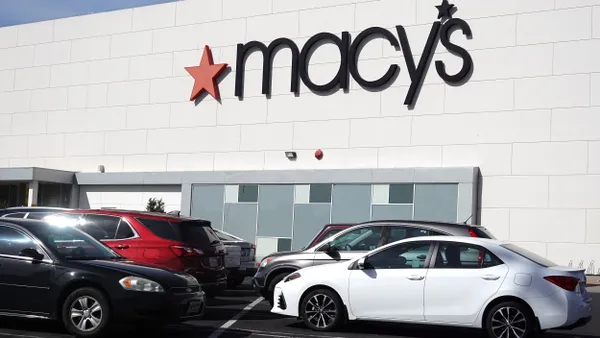Dive Brief:
- Burlington Stores' product sourcing costs rose by 78% in the past two years, a shift driven almost entirely by higher supply chain costs during the pandemic, Chief Financial Officer John Crimmins said on the company's Q2 earnings call.
- Product sourcing costs, "which include the cost of processing goods to our supply chain and buying costs" were $82 million at a comparable time before the pandemic, in Q2 2019, Crimmins said. In Q2 2021, they were $146 million, a surge due to increased wage costs and limited transport capacity.
- The pressures are similar to what other retailers are facing, and have faced since Q4 2020. Crimmins said Burlington expected back in May that costs would rise, "but we underestimated the magnitude of the increase."
Dive Insight:
Company executives laid out three reasons why supply chain costs are leading to high prices — and why they think the cost increases are temporary.
- High ocean freight costs affect nearly all products the off-price retailer sells
- Demand for domestic freight far exceeds the capacity in existing transport modes
- Total wages paid have increased, as both base pay and the total number of workers needed rose
At their core, these three factors are a symptom of a larger issue for U.S. supply chains: a surge in demand for imports caught the available supply of inventory and transport capacity flat-footed. But Burlington executives projected the issues being faced, including high prices, are temporary.
"For several quarters now, there has been a significant imbalance in global transportation systems between demand and available capacity," CEO Michael O'Sullivan said on the earnings call. "This has caused unprecedented volatility and disruption in deliveries of merchandise across all sectors of retail and it has caused a significant spike in international and domestic freight rates."
For Crimmins, this high demand for freight capacity has clogged the pipes in the supply chain as retailers are doing everything they can to get products through.
"There aren't enough containers," Crimmins said. "There aren't enough ships. There aren't enough trucks or trains. There is more volume now than any part of the supply chain pipes can adequately handle. Every piece of the pipe is slower and that our backlogs to work through every step of the way."
In response, retailers have pursued an assortment of strategies. Some are accelerating their orders to get the inventory they need into stores ahead of peak season. Others, like Walmart, are chartering ships to secure space.
"This has even further increased the pressure on the supply chain, helping to drive even higher rates," Crimmins said. As an example, Crimmins said the pre-pandemic spot rate for shipping a container from China to the U.S. West Coast was around $1,500. "To do that now, it costs $15,000 and the rates are still increasing."
The Burlington executives said they expect freight costs to remain high through 2022, but to eventually normalize. And for that reason, they are skeptical about raising prices.
"It's clear the inventory levels across the retail industry have been very lean this year and as a consequence, there has been very little promotional activity," O'Sullivan said. "That means, that realized prices have been higher for many retailers. But we just don't think that's sustainable."
Executives said eventually, when the supply chain disruptions normalize, prices will return to normal. O'Sullivan reminded investors of the high spot rates in the ocean freight market, as an example of how high prices are due to a temporary supply-demand imbalance and not permanent indicators.
"Ocean freight rates are about ten times higher now than they were in 2019. That is not because operating a ship or paying a dockyard worker is ten times higher. It's because demand exceeds capacity," O'Sullivan said. "That imbalance won't last. It will normalize."
But even if the executives' predictions are wrong, Burlington sees other retailers' price increases and potentially missed deliveries in the holidays as a sales opportunity for the off-price clothing market.
"Maybe prices across retail really will move up in the next year or two and to be clear, we wouldn't mind at all," O'Sullivan said. "For an off-price retailer like us that would be terrific. It would help to further expand our value differentiation."














